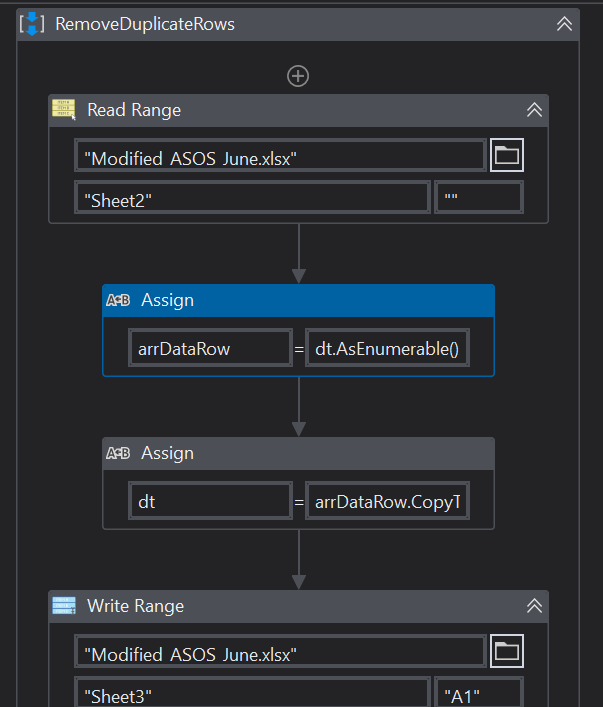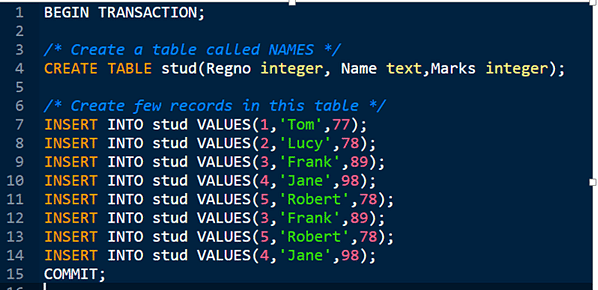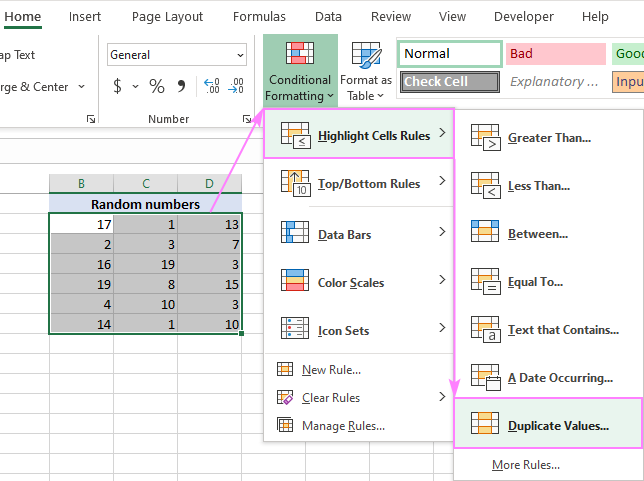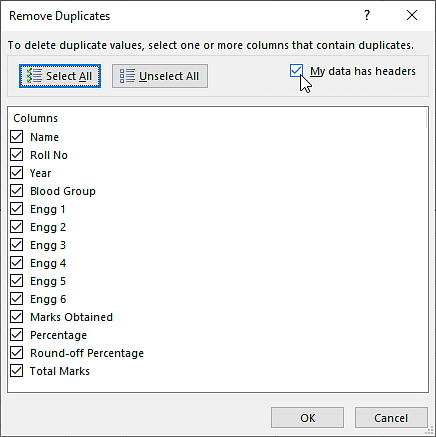R Remove Duplicated Rows
In data analysis and manipulation, it is common to encounter duplicate rows in your dataset. These duplicated rows can complicate your analysis and produce inaccurate results. Luckily, R provides numerous methods to identify and remove duplicated rows efficiently. In this article, we will explore different techniques to remove duplicate rows in R and discuss some best practices for handling duplicate rows.
Identifying Duplicate Rows
Before we dive into the methods to remove duplicate rows, let’s first obtain a clear understanding of what constitutes a duplicate row. In R, a row is considered a duplicate if it has the exact same values in all of its columns as another row in the dataset. Now that we have established the criteria for identifying duplicate rows, let’s move on to the various methods to remove them.
Methods to Remove Duplicate Rows
1. Using the Distinct Function
The `distinct()` function in the dplyr package is a powerful tool for removing duplicate rows. This function returns a dataset with only unique rows, excluding any duplicate rows.
Example:
“`R
library(dplyr)
distinct_dataset <- distinct(dataset)
```
2. Using the group_by() Function
Another handy function provided by the dplyr package is `group_by()`. This function groups the rows based on specific columns, allowing us to identify duplicate rows within those columns.
Example:
```R
library(dplyr)
dataset %>%
group_by(column1, column2) %>%
filter(!duplicated(.))
“`
3. Using the duplicated() Function
The `duplicated()` function is a useful way to detect duplicate rows in your dataset. It returns a logical vector indicating whether each row is a duplicated row or not.
Example:
“`R
duplicated_rows <- dataset[duplicated(dataset), ]
```
Removing Duplicate Rows Based on Specific Columns
In some cases, you may have a dataset with multiple columns, but you only want to remove duplicates based on selected columns. R provides efficient ways to handle this situation.
4. Removing Duplicate Rows by Keeping the First Occurrence
If you want to keep only the first occurrence of each duplicated row based on specific columns, you can use the `duplicated()` function in combination with the logical negation (`!`).
Example:
```R
dataset <- dataset[!duplicated(dataset[, c("column1", "column2")]), ]
```
5. Removing Duplicate Rows by Keeping the Last Occurrence
On the other hand, if you want to keep the last occurrence of each duplicated row based on specific columns, you can utilize the `duplicated()` function in conjunction with the `fromLast = TRUE` argument.
Example:
```R
dataset <- dataset[!duplicated(dataset[, c("column1", "column2")], fromLast = TRUE), ]
```
Removing Duplicate Rows Based on Multiple Columns
Sometimes, you may need to remove duplicates based on multiple columns. In such cases, you can specify multiple columns within the `group_by()` function or the `duplicated()` function.
Example:
```R
dataset %>%
group_by(column1, column2, column3) %>%
filter(!duplicated(.))
“`
Considerations when Removing Duplicate Rows
While removing duplicate rows can be beneficial for data analysis, there are a few considerations to keep in mind.
Impact on Data Analysis
Removing duplicate rows can significantly impact your data analysis results. It can lead to a reduction in the size of your dataset, which may affect the representativeness and statistical validity of your analysis. Thus, it is essential to carefully assess the potential consequences before removing duplicate rows.
Best Practices for Handling Duplicate Rows
To ensure effective handling of duplicate rows, consider the following best practices:
Include Remove duplicate in R, Remove row in R, Find duplicate in R, Distinct in R, Remove row with condition in R, Remove row in R With condition, Duplicated in R, Drop na in rr remove duplicated rows in R as keywords in your search to find the right syntax or package to remove duplicate rows in R. By including these keywords, you can quickly find relevant resources and examples specific to your needs.
FAQs Section:
Q: What is the difference between `duplicated()` and `distinct()` in R?
A: The `duplicated()` function identifies duplicate rows in a dataset, returning a logical vector indicating which rows are duplicated. On the other hand, the `distinct()` function returns a dataset with only unique rows, excluding any duplicate rows.
Q: Can I remove duplicate rows based on specific columns without using external packages?
A: Yes, you can use base R functions such as `duplicated()` and `subset()` to remove duplicate rows based on specific columns. However, using packages like dplyr or data.table can provide more efficient and readable solutions.
Q: Can I remove duplicate rows in a large dataset without affecting its size?
A: Yes, you can remove duplicate rows from a large dataset without altering its size by saving the result in a new variable or creating a new dataset. By retaining the original dataset, you can preserve the integrity of the data while facilitating data analysis.
Q: Are there any other R packages to remove duplicate rows besides dplyr?
A: Yes, apart from dplyr, you can use the data.table package, which offers efficient methods to remove duplicate rows. It can be a good alternative for handling large datasets.
Q: How can I identify and remove duplicate rows based on more than three columns?
A: To identify and remove duplicate rows based on multiple columns, you can specify those columns within the `group_by()` function or the `duplicated()` function. Simply list all the columns you want to consider for duplicate removal.
In conclusion, removing duplicate rows in R is a crucial step in data cleaning and analysis. By utilizing functions like `duplicated()`, `distinct()`, and `group_by()`, you can efficiently identify and remove duplicate rows based on specific columns or the entire dataset. Remember to consider the impact on data analysis and adhere to best practices to ensure accurate and reliable results.
Remove Duplicated Rows From Data Frame In R (Example) | Delete Replicates With Duplicated() Function
Keywords searched by users: r remove duplicated rows Remove duplicate in R, Remove row in R, Find duplicate in R, Distinct in R, Remove row with condition in R, Remove row in R With condition, Duplicated in R, Drop na in r
Categories: Top 83 R Remove Duplicated Rows
See more here: nhanvietluanvan.com
Remove Duplicate In R
R is a powerful programming language widely used by data scientists and statisticians for data manipulation, analysis, and visualization. When working with large datasets, it is not uncommon to encounter duplicate values, which can greatly affect the accuracy and reliability of our analyses. In this article, we will explore various methods to efficiently remove duplicates in R and improve the quality of our data.
Methods to Remove Duplicates in R:
1. Using the “duplicated” function:
The most straightforward way to identify and remove duplicates in R is by using the “duplicated” function. This function returns a logical vector indicating whether each element is duplicated or not, allowing us to easily filter out the duplicated entries. Here is an example:
“`
data <- c(1, 2, 2, 3, 4, 4, 5)
unique_data <- data[!duplicated(data)]
```
In this case, the resulting "unique_data" will be [1, 2, 3, 4, 5], as it removes the duplicate values.
2. Utilizing the "distinct" function from the dplyr package:
The dplyr package is a popular package for data manipulation in R, and it provides a simple and intuitive method to remove duplicates using the "distinct" function. This function returns a data frame with unique rows based on selected variables. Here is an example:
```
library(dplyr)
data <- data.frame(a = c(1, 2, 2, 3, 4, 4, 5),
b = c("a", "b", "b", "c", "d", "d", "e"))
distinct_data <- distinct(data)
```
In this case, the resulting "distinct_data" will contain only unique rows based on the values of both columns "a" and "b".
3. Applying the "aggregate" function:
Another method to remove duplicates in R is by using the "aggregate" function. It allows us to group the data based on one or multiple variables and apply a function to each group. By selecting a summary function like "unique", we can effectively remove duplicates. Here is an example:
```
data <- data.frame(a = c(1, 2, 2, 3, 4, 4, 5),
b = c("a", "b", "b", "c", "d", "d", "e"))
unique_data <- aggregate(. ~ a + b, data = data, FUN = unique)
```
In this case, the resulting "unique_data" will contain only unique combinations of values for both columns "a" and "b".
FAQs:
Q1. Can duplicates be removed from multiple columns simultaneously?
Yes, duplicates can be removed from multiple columns simultaneously by specifying those columns in the methods mentioned above. It ensures unique combinations of values across the selected columns are retained.
Q2. Will removing duplicates affect the original order of my data?
The "duplicated" function preserves the original order of the data, while the other methods may reorder the data based on the selected variables or groups. If maintaining the original order is crucial, consider storing the order in a separate column before removing duplicates and using it to reorder the data later.
Q3. How can I remove duplicates based on a specific column and keep the first occurrence?
To remove duplicates based on a specific column and retain only the first occurrence, the "dplyr" package can be used. The "distinct" function takes an argument "keep_all" as "FALSE" by default, which will remove all duplicates, keeping only the first occurrence.
Q4. Are there any alternative packages or functions to remove duplicates?
Yes, besides the methods mentioned above, other packages like "data.table" and their respective functions like "unique" and "duplicated" can be used to remove duplicates. These packages often offer faster and more memory-efficient solutions for handling large datasets.
Q5. How can I remove duplicates from a dataframe where only some columns need to be considered?
When removing duplicates from a dataframe while considering only specific columns, you can select those columns and use the methods mentioned in this article. This way, all other columns will not be considered during the duplicate removal process.
Conclusion:
Removing duplicates is a common task, vital for cleaning and analyzing data accurately. In this article, we covered several methods in R to efficiently remove duplicates, including using the "duplicated" function, the "distinct" function from the dplyr package, and the "aggregate" function. By employing these methods, one can effectively eliminate duplicate values and ensure the quality and reliability of their data analysis process. Remember to choose the appropriate method based on your specific requirements and size of the dataset.
Remove Row In R
Introduction:
R is a powerful programming language and software environment widely used for statistical analysis, data visualization, and data manipulation. One crucial skill for every R user is the ability to remove rows from a data frame based on various criteria. Whether you want to eliminate incomplete or irrelevant observations or simply clean up your data, mastering the techniques to remove rows in R is essential. In this article, we will explore different methods to accomplish this task and provide valuable insights to ensure that you can efficiently remove rows in R.
Methods to Remove Rows in R:
1. Using Subsetting Operators:
One of the simplest and most straightforward ways to remove rows in R is by using subsetting operators. Subsetting operators allow you to select specific rows or columns from a data frame based on certain conditions. For instance, to remove rows where a specific column value is missing (NA), you can use the following syntax:
“`r
df <- df[complete.cases(df$columnName), ]
```
This code snippet subsets the data frame `df` by selecting only the rows where the column `columnName` does not have any missing values. The resulting data frame will contain all rows except those with missing values in the specified column.
2. Removing Rows by Index:
Another common method to remove rows in R is by specifying the row indices you want to exclude. Let's say you have a data frame `df` consisting of five rows, and you want to remove the third row. You can achieve this using the following code:
```r
df <- df[-3, ]
```
The `-3` within the square brackets indicates that the third row should be removed, resulting in a modified data frame containing only the remaining rows.
3. Removing Rows Based on a Condition:
Sometimes, you may want to remove rows based on specific conditions rather than by index. For example, if you have a data frame containing records of students' test scores, and you want to remove all rows where the score is below a certain threshold, you can utilize conditional subsetting. The code snippet below demonstrates this:
```r
threshold <- 60
df <- df[df$score >= threshold, ]
“`
In this example, the data frame `df` is subsetted to include only the rows where the score column value is greater than or equal to the specified threshold. All rows with scores below the threshold will be effectively removed.
4. Removing Rows by Duplicates:
Removing duplicate rows is a common task when working with large datasets. In R, you can remove duplicate rows based on specific columns using the `duplicated()` function. Let’s assume you have a data frame `df` and want to remove rows that are duplicates based on the `columnName`. You can accomplish this by using the following code:
“`r
df <- df[!duplicated(df$columnName), ]
```
The `duplicated()` function returns a logical vector indicating which rows are duplicated based on the specified column. Using `!` before `duplicated()` negates the logical vector and returns `TRUE` for the unique rows. Thus, the resulting data frame will only contain non-duplicated rows.
Frequently Asked Questions (FAQs):
Q1. Can I remove multiple rows in a single operation?
Yes, you can remove multiple rows in R using any of the aforementioned methods. To remove multiple rows using indexing, you can simply provide a vector of row indices to be excluded. For example:
```r
df <- df[-c(2, 5, 7), ]
```
This code will remove the second, fifth, and seventh rows from the data frame `df`.
Q2. How can I remove rows based on multiple conditions?
To remove rows based on multiple conditions, you can combine multiple logical statements using the `&` operator for an "AND" condition or the `|` operator for an "OR" condition. For instance:
```r
df <- df[df$score >= 60 & df$age < 25, ]
```
This code selects and keeps only the rows in `df` where the score is greater than or equal to 60 and the age is less than 25.
Q3. How do I remove rows with missing values in any column?
If you want to remove rows with missing values in any column, you can use the `complete.cases()` function without specifying a specific column. For example:
```r
df <- df[complete.cases(df), ]
```
This code subset the data frame `df` to exclude rows where any column has a missing value (NA).
Q4. Is it possible to remove rows based on a character pattern or string match?
Yes, you can remove rows based on a character pattern or string match in R. One way to achieve this is by using regular expressions (regex). You can use functions such as `grep()` or `grepl()` to identify rows with specific string patterns and then remove them accordingly.
In conclusion, removing rows in R is a vital skill for data cleaning and analysis. By understanding the various methods available, such as using subsetting operators, removing rows by index, based on conditions, or duplicates, you can adeptly manipulate your datasets. Moreover, the FAQs section addresses common queries and clarifies doubts that might arise while removing rows in R. So, go ahead, experiment with these techniques, and empower yourself to efficiently manage your data in R.
Images related to the topic r remove duplicated rows

Found 14 images related to r remove duplicated rows theme


















































Article link: r remove duplicated rows.
Learn more about the topic r remove duplicated rows.
- How to Remove Duplicate Rows in R – Spark By {Examples}
- Remove duplicated rows – Stack Overflow
- Identify and Remove Duplicate Data in R – Datanovia
- How to Remove Duplicate Rows in R DataFrame?
- Remove Duplicate rows in R using Dplyr – distinct () function
- How to Remove Duplicate Rows in R (With Examples)
- How to Remove Duplicate Rows in R? – Data Science Parichay
- How to Remove Duplicates in R with Example – R-bloggers
- How to Remove Duplicates in R – Rows and Columns (dplyr)
See more: https://nhanvietluanvan.com/luat-hoc